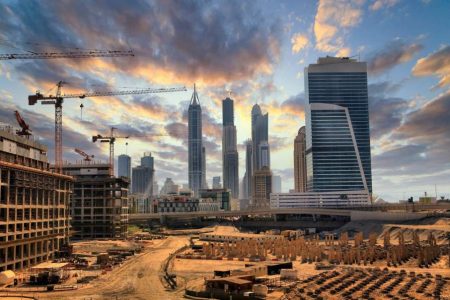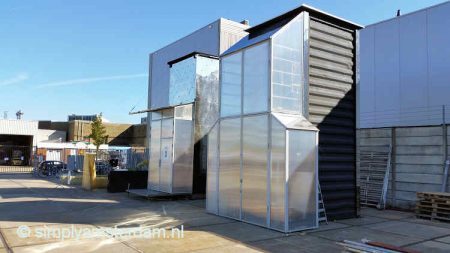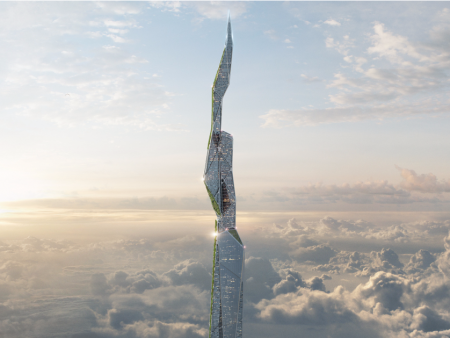March 20, 2017 – It appears 3D printing has moved from the industrial workbench and home hobbyist to the world of large-scale building construction. No longer are we to be impressed by a 3D printer that can turn out a house in one day. Now we are going to see the technology employed using a new technique called “crane printing” to create a building in the United Arab Emirates (UAE).

The two “inks” to be used in creating this new structure will be steel and concrete. But states Xavier Hernand, a mechanical engineer at Cazza Technologies, the company that will build the skyscraper, “the material side leaves vast possibilities with concrete and steel being just one of many materials that can be used with 3D printing.”
The crane printing system can be installed on existing construction cranes and includes features that compensate for wind as the building is printed. The technology uses a “layer smoothing system” that leaves a perfectly flat surface. States Fernando De Los Rios, COO of Cazza, “you won’t know it’s 3D printed.”
Cazza describes itself as a leading edge company creating the “world’s next-generation large-scale 3D printing construction” technology to make construction cost-effective, faster and environmentally more sustainable. The company was co-founded by Chris Kelsey and De Los Rios. States Kelsey, “when we first thought of implementing 3D printing technologies, we were mostly thinking of houses and low-rise buildings.” But driven by the industry to look at ways of printing larger structures the two partners brought together an engineering team with expertise in robotics, artificial intelligence, and 3D printing applied to construction.
The Cazza printing process will include all major structural components: concrete, steel, rebar and more. Some aspects of construction will continue using more traditional methods. The height of the planned UAE skyscraper has yet to be announced. In choosing Dubai to be the first location for a 3D-printed skyscraper, Kelsey states, “we came here to change the world, and that’s exactly what we’re doing.”
In fact is 3D printing large buildings environmentally better than using existing construction technologies?
There is no doubt that 3D printers can be made very cheaply and erected at a construction site with the same ease as putting up a construction crane. Material advances in creating inks from metals and concrete are already available. And demonstrations of 3D printing of houses has shown that the technology is fast, reducing construction time dramatically. China has 3D printed homes in a single day. But beyond printing a 400-square-meter single storey home, no one yet has attempted to 3D print on the scale of a skyscraper.
Will a 3D-printed building allow engineers to use materials that are more ecologically friendly? For example, traditional concrete materials are highly carbon intensive. But in altering the formula for concrete to make it a suitable printer ink, can we reap the benefit of a material with a smaller carbon footprint? In experimenting with 3D printing materials and design, engineers may be able to create structurally stronger walls and supports that are lighter and more durable. Walls may be designed to be more porous so that they let in light while retaining excellent thermal characteristics. Back in April 2014, I wrote about a canal house project in The Netherlands that was completely built using 3D printing. The main construction material used was a cement that incorporated recycled sawdust, pulverized tires, recycled paper, and salt.

It is also important to note that 3D-printed buildings are not limited to boxy shapes. The flexibility in the material application makes it possible to create structures with curves that are stronger and more durable than traditional buildings. This gives architects the opportunity to dream up the most extraordinary designs without sacrificing safety and endurability.
















